Manuel Panselinos
Manuel Panselinos | |
|---|---|
 Jesus | |
| Born | late 13th century Thessaloniki |
| Died | early 14th century Thessaloniki |
| Nationality | Greek |
| Known for | Iconography and hagiography |
| Movement | Macedonian School |
Manuel Panselinos (Greek: Μανουήλ Πανσέληνος, late 13th/early 14th centuries) was a fresco and icon painter in the Byzantine Empire. He is one of the most influential artists of the Byzantine period. Many of his attributed works survived. He was very active in the historical province of Macedonia, and is the most prominent figure of the Byzantine style, Palaeologan Renaissance, and the Macedonian School of painting. The center of the school's development was Thessaloniki. The second capital of the Byzantine Empire was Thessaloniki. There were prominent painting workshops in Thessaloniki and Constantinople. Other notable Greek-Byzantine artists were Ioannis Pagomenos and Theodore Apsevdis.[1]
History[]
Manuel Panselinos was born in the later part of the 13th century in Thessaloniki. His primary works were iconography and frescos. His works can be found in monasteries such as Mount Athos, Vatopedi, Lavra, Protatos and Karyes. His most important work is the mural painting of the church of the Protaton Monastery, on the Holy Mount. His contemporaries were Georgios Kalliergis, Michael Astrapas, and Eutychios Astrapas. Some historians believe Georgios Kalliergis was one of his students due to the similarity in painting styles.[2]
Gallery[]
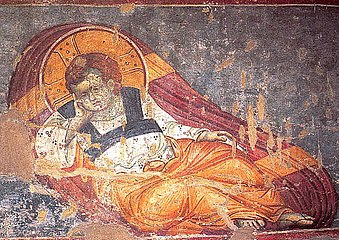
Jesus as Youth
Jesus as Youth
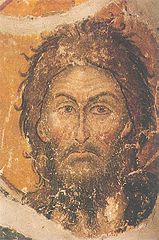
John the Baptist
Jesus and Samaritan woman
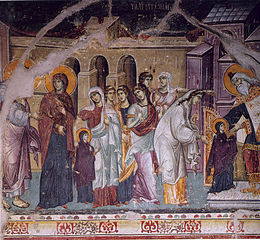
Presentation of Mary
Saint Demetrius

Saint Eustace
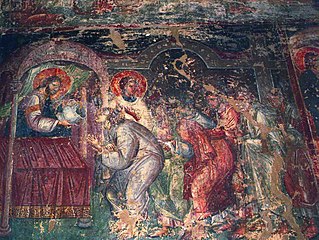
Saint Euthymius

Saint John the Evangelist
Saint Mercurius and Artemius of Antioch
Theodore Stratilat and Theodore Tyron

Jesus
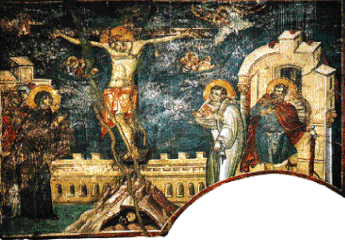
Crucifixion of Jesus
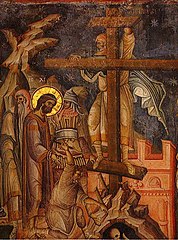
Jesus and the Cross
See Also[]
References[]
- ^ Tsigaridas, Euth. N. (2003). Manuel Panselinos from the Holy Church of the Protaton. Athens, Greece: Hagioritiki Estia. p. 5.
- ^ Alin, Trifa Razvan (March 2011). "MASTER MANUIL PANSELINOS AND THE MACEDONIAN SCHOOL OF PAINTING" (PDF). European Journal of Science and Theology. 7 (1): 13–23 – via European Journal of Science and Theology website.
- Greek Christian monks
- Byzantine painters
- Christian iconography
- Byzantine Thessalonians
- 13th-century births
- 14th-century deaths
- Christianity in medieval Macedonia
- 13th-century Byzantine people
- 14th-century Byzantine people
- 13th-century Greek people
- 14th-century Greek people
- 13th-century Greek painters
- 14th-century Greek painters













